Guitarfish conservation with local communities
“We see this guitarfish regularly, but didn’t know that it was endangered. We’ll make sure to release it now, and also tell our friends about this” – a local fisher in Goa.
Local communities can be key stakeholders for the conservation of threatened species. For the last part of our project, we worked with local fishing communities in South Goa, India, to encourage conservation action for the Critically Endangered widenose guitarfish.
Our research has revealed that juvenile guitarfish occupy nearshore, coastal habitats across many beaches in South Goa, with one site, Galgibag beach, most likely serving as a nursery ground. Our surveys recorded over a hundred widenose guitarfish present at Galgibag, all under 25cm in size and hence most likely neonates (i.e. newborns). Unfortunately, these young guitarfish get entangled in local fishing gear in this region. While our study suggests that catch rates of guitarfish were relatively low, when added up over a year this can still lead to significant mortality in these highly threatened species, especially in critical habitats like nursery grounds.
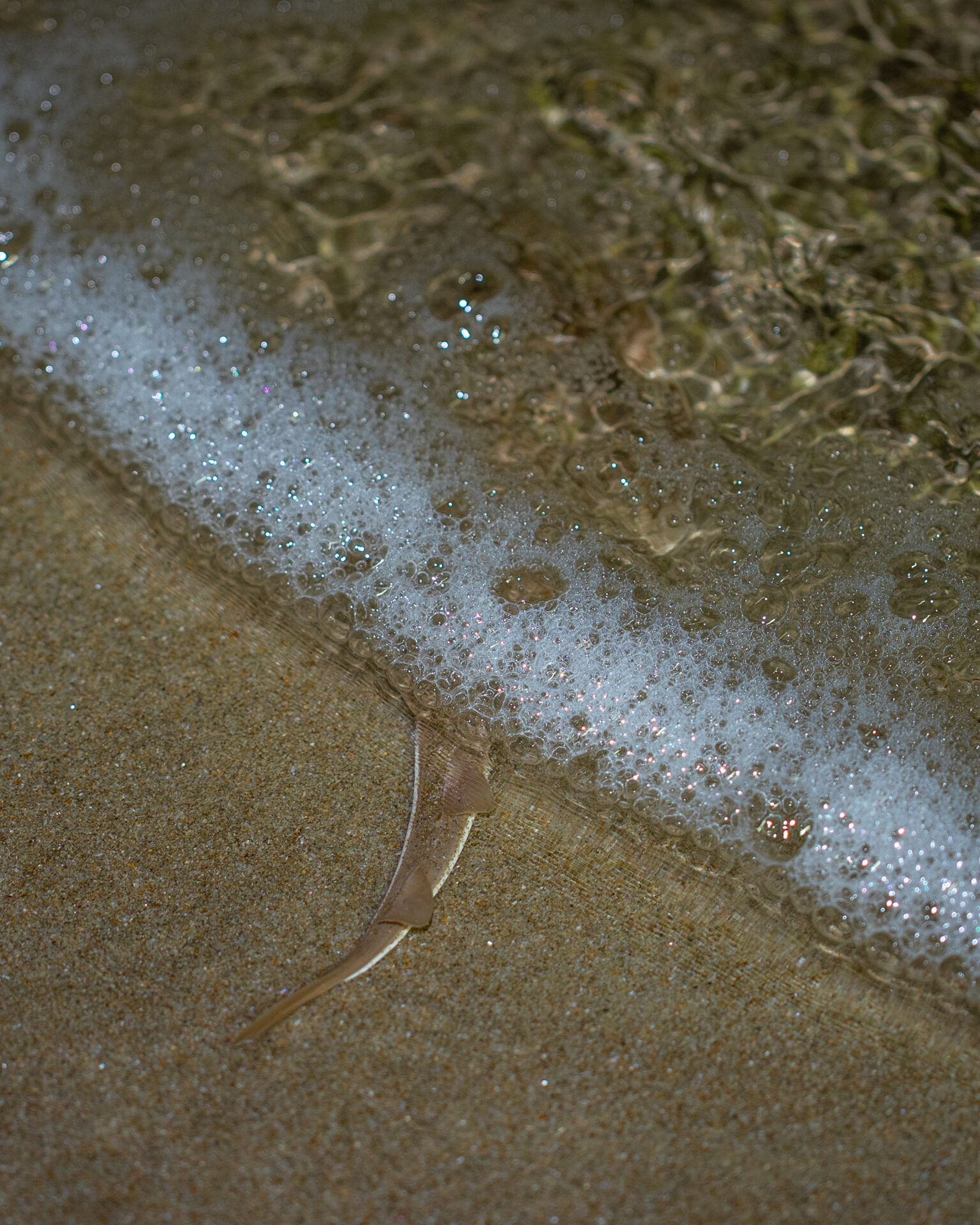
A small widenose guitarfish at the wave line swimming back into the water in Galgibag beach, which is likely a nursery ground for this species. Photo © Udayan Rao Pawar
Therefore, one of our objectives was to work with fishing communities to raise awareness about guitarfish, develop local pride for these species and ultimately promote live release from their nets. Our previous research in the area found that guitarfish were a low-value bycatch species in Goa, and fishers held positive attitudes towards their conservation. So, we believed that voluntary live release of these species by fishers, without any financial incentives, would be a feasible conservation measure. To lay the groundwork for this, we produced a short film in the local language (Konkani), that was distributed amongst community members. Most fishers in Goa have access to smartphones and regularly use the messaging service WhatsApp, so this formed a good platform to share our outreach film. We also used the help of local key informants, such as influential fishers, community leaders, local conservationists and government officials, to further spread our film.
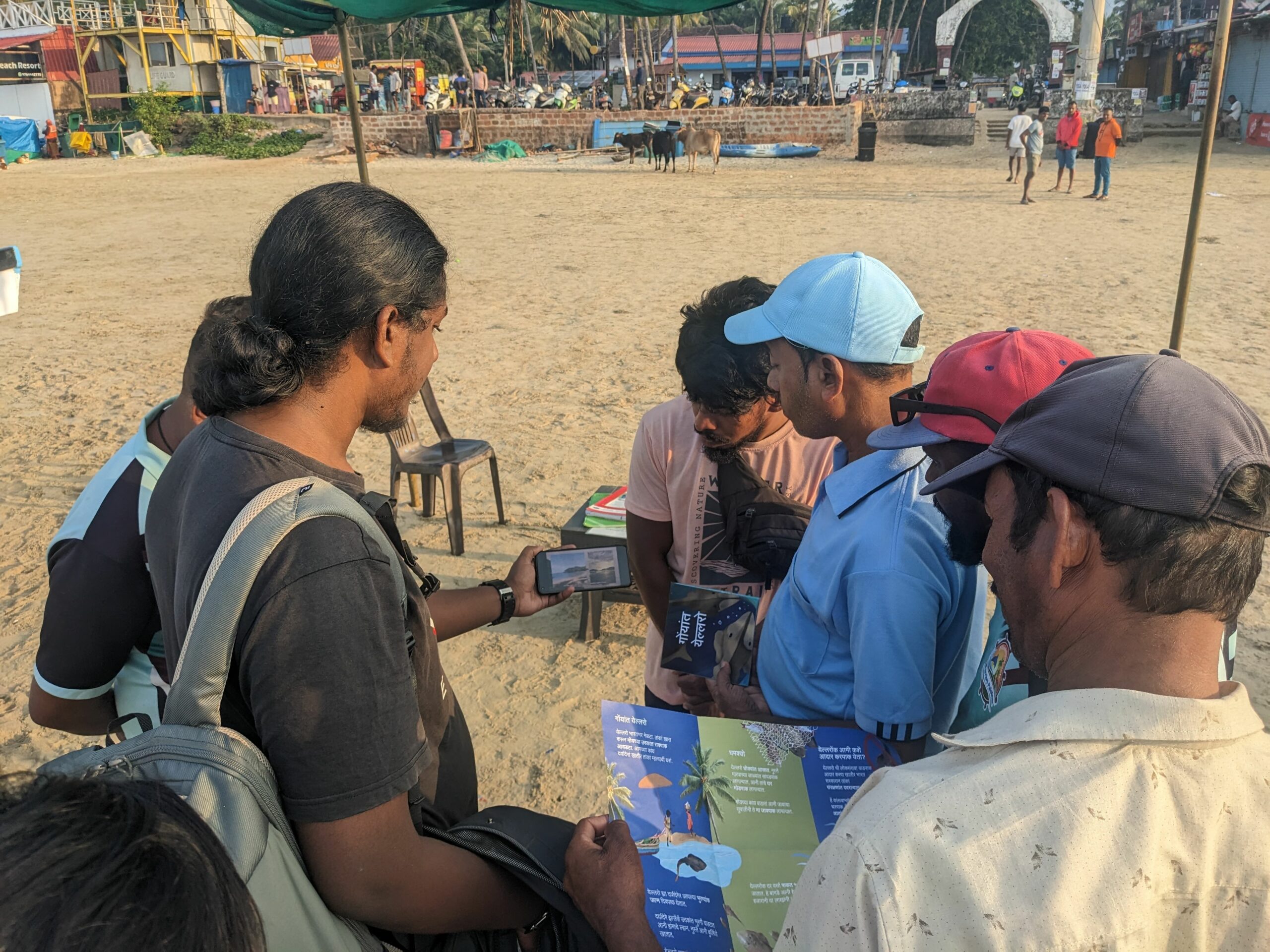
Outreach film being shown by the project team to local fishers in Goa. Photo © Manini Bansal.
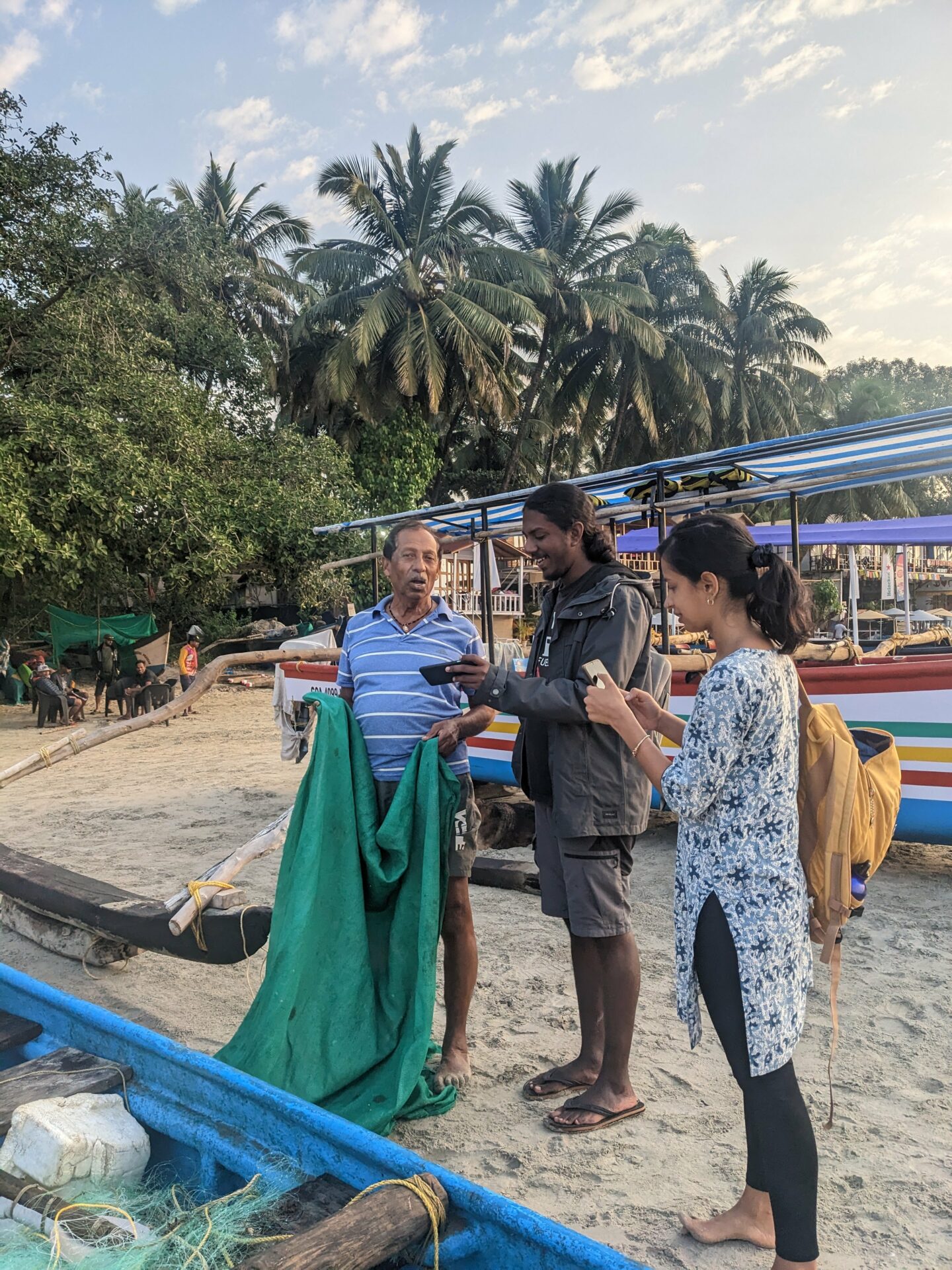
Outreach film being shown to another local fisher in Goa by the project team. Photo © Manini Bansal
The film appeared to be well received. Some fishers were excited to see clips of their friends, local beaches and familiar community spaces in the video, while others were surprised to hear that guitarfish were threatened. Most fishers who we engaged with stated that they would release guitarfish caught in their nets, and also tell others in their community. Following this outreach work, we did receive reports and photos of some local fishers releasing live guitarfish in the water. While these were just a few incidents, it was very heartwarming to see some positive impact of our work!
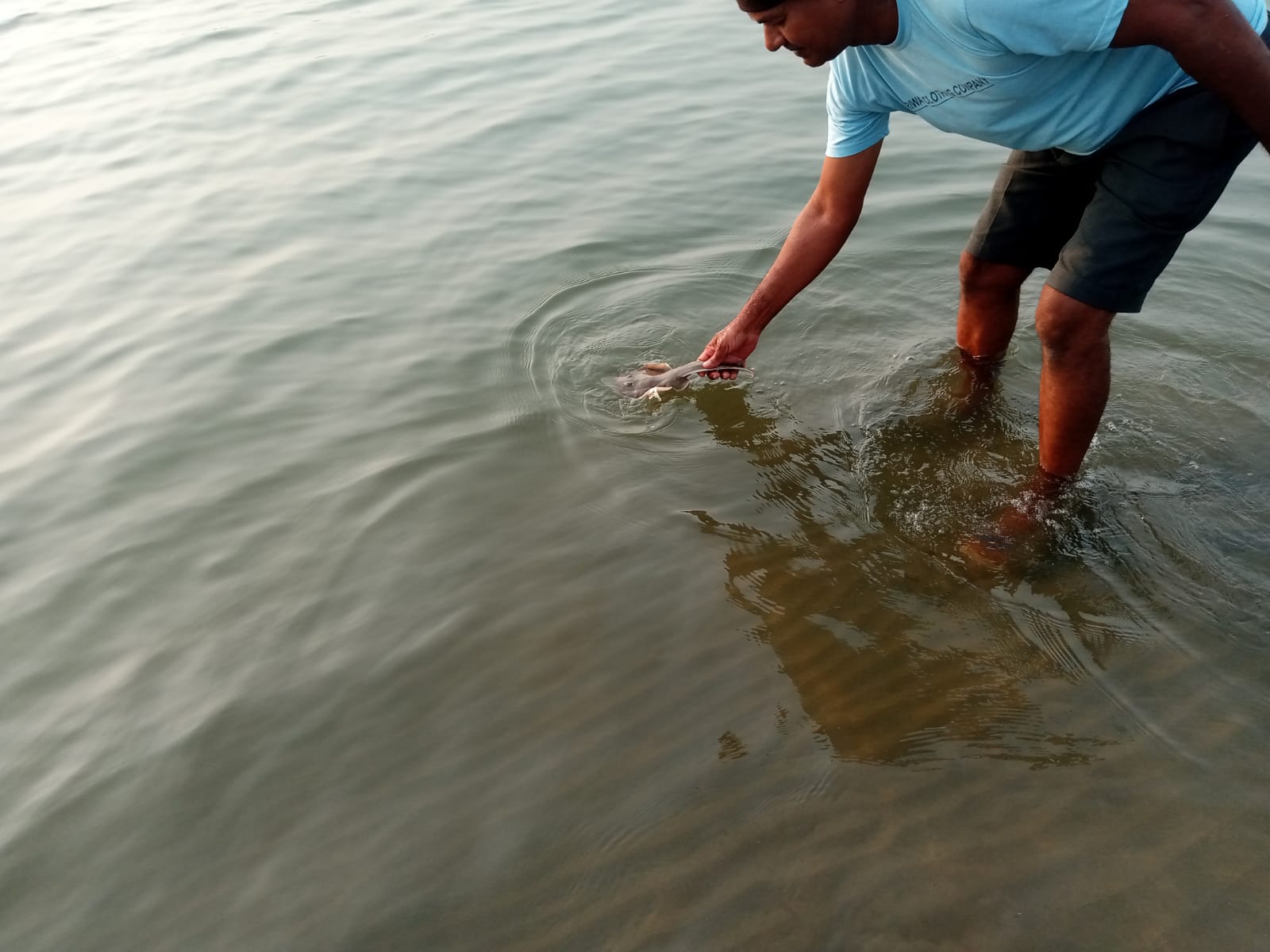
A fsher voluntarily releasing guitarfish back into the water. Photo © Puja Mitra
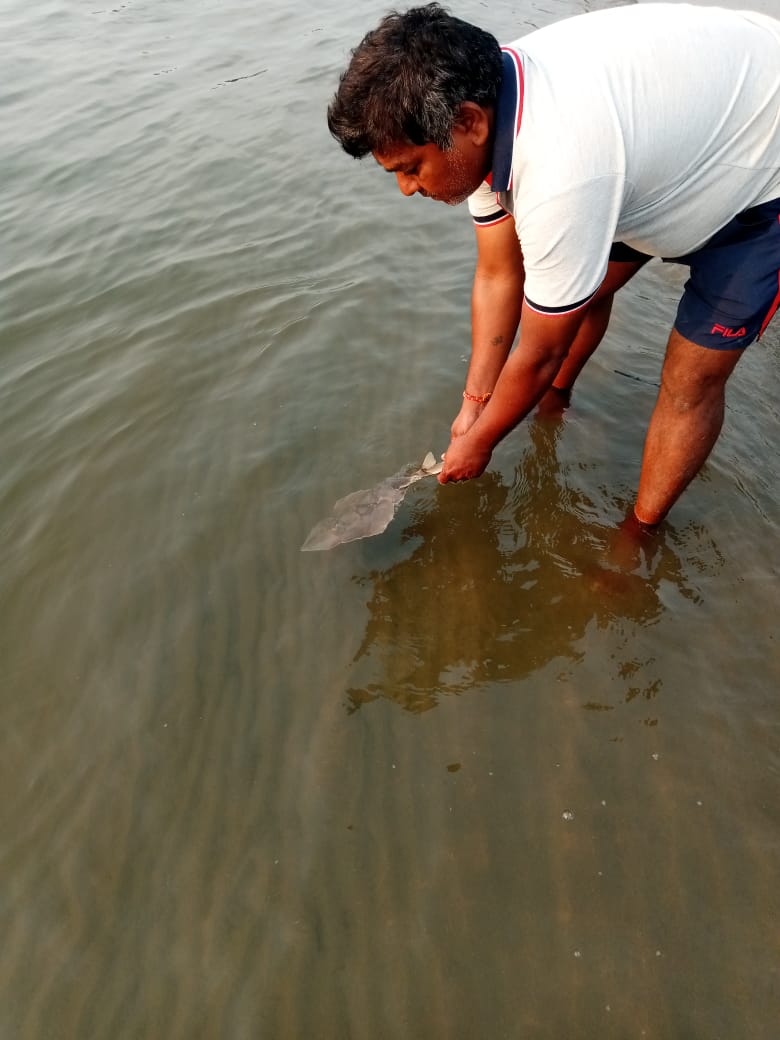
Another fisher voluntarily releasing a guitarfish back into the water. Photo © Puja Mitra
These outreach activities were the first steps towards developing live release programmes for guitarfish with community participation. We hope to build on this and implement a more rigorous intervention through future work, to bring about a positive change for guitarfish populations.
